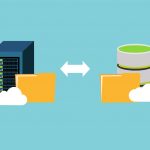In the realm of networking and computing, “localhost” and the IP address “127.0.0.1” hold significant importance. Understanding these concepts is essential for anyone working with computers, servers, or web development. This blog post aims to delve into the basics of localhost, its workings, and its various applications.
Table of Contents
What is Localhost (IP 127.0.0.1)?
Localhost refers to the local computer that a program is running on. The term “localhost” is a hostname that resolves to the IP address 127.0.0.1. This IP address belongs to the reserved block of IP addresses (127.0.0.0/8) used specifically for loopback functionality. The loopback mechanism is crucial in networking, as it allows a computer to establish an IP connection to itself, bypassing any physical network interfaces or external networks.
In technical terms, 127.0.0.1 is a non-routable address that belongs to the Class A network designated for loopback purposes. This means any traffic sent to 127.0.0.1 is not passed through a network interface card (NIC) to reach another device. Instead, it is rerouted back to the originating device. This is particularly useful for testing and development purposes because it enables developers to simulate network connections and run applications locally without needing a physical network or an internet connection.
How does the 127.0.0.1 Loopback address work?
The localhost IP address, 127.0.0.1, is part of a reserved block of more than 16 million addresses (127.0.0.0 to 127.255.255.255) that are used for loopback functionality. When a user tries to connect to this address, the TCP/IP protocol stack within the operating system intercepts this connection and reroutes it back to the same computer, bypassing any physical network interfaces or external networks. This loopback mechanism is implemented at the operating system level and does not involve any network hardware.
- DNS Resolution: When you type “localhost” in your browser, the system’s DNS resolver translates this hostname to the IP address 127.0.0.1, using the hosts file on your computer.
- Initiating a Request: An application (like a web browser) creates a network request to connect to 127.0.0.1 using the appropriate protocol (e.g., HTTP).
- TCP/IP Stack Processing: The request is passed down to the TCP/IP stack in the operating system. The stack identifies 127.0.0.1 as a loopback address and routes the packet to the loopback network interface (often named lo).
- Routing: The loopback interface captures the packet and processes it internally. The packet never leaves the local machine.
- Service Handling: The packet reaches the local service (such as a web server) running on the machine. The service processes the request and prepares a response.
- Response Transmission: The response is sent back through the loopback interface and processed by the TCP/IP stack.
- Delivery to Application: The application (e.g., web browser) receives the response and displays the output, such as rendering a web page.
Experience Industry-Leading DNS Speed with ClouDNS!
Ready for ultra-fast DNS service? Click to register and see the difference!
What ties Localhost to 127.0.0.1?
Localhost and 127.0.0.1 are essentially synonymous. The hostname “localhost” resolves to the IP address 127.0.0.1. This resolution is typically handled by the operating system’s hosts file. For example, on Windows systems, this file is located at C:\Windows\System32\drivers\etc\hosts, and on Unix-based systems, it is located at /etc/hosts.
The entry in the hosts file might look something like this:
127.0.0.1 localhost
This line ensures that any reference to “localhost” will be directed to the IP address 127.0.0.1, enabling the loopback functionality.
Why do you need to use Localhost?
Localhost serves several important functions in computing and web development. Here are some common uses:
Block Sites
One intriguing application of localhost is in blocking access to certain websites. For instance, if you want to prevent users from a specific country from accessing your website, you can use a GeoDNS service. By configuring the DNS A record to point to 127.0.0.1 for the targeted country, any request from that country will be redirected back to the user’s own device, effectively blocking access to your site.
How to block website visitors by country with IP 127.0.0.1?
Host Web Apps Locally
Localhost is invaluable for testing and development. Developers can set up web servers, databases, and other services on their local machines to develop and test applications without affecting a live environment. This allows them to make changes, test functionalities, and debug issues in a safe and isolated environment before deploying the application to a live server.
Running Network and Speed Tests
Using localhost, you can run various network tests to diagnose and troubleshoot issues. Since localhost bypasses external network components, it provides a controlled environment to test applications and services. Networking experts ensure the TCP/IP, equipment, and other resources on a network are in good shape. With localhost, you don’t need an internal connection to test your local network. You can simply send a request to figure out whether the system’s software is working correctly.
Troubleshooting Localhost issues
Despite its simplicity, issues with localhost can arise. Common problems include:
- Service Not Running: Ensure that the service you are trying to access is running. For example, if you are trying to access a web server on localhost, make sure the web server software (e.g., Apache, Nginx) is started.
- Port Conflicts: Multiple services cannot use the same port. Check if the port number your service is using is not already in use by another application.
- Firewall and Security Settings: Sometimes, firewall or security settings might block access to localhost. Ensure that local connections are allowed.
FAQ
When it comes to understanding and utilizing localhost, there are many common queries that users have. Below, we address some of the most frequently asked questions to help you navigate this essential aspect of networking and web development.
Q: Can I use other IP addresses instead of 127.0.0.1 for localhost? A: Yes, any IP address in the range 127.0.0.0 to 127.255.255.255 can be used for loopback purposes. However, 127.0.0.1 is the standard and most commonly used address.
Q: Why is 127.0.0.1 called a loopback address? A: It is called a loopback address because it loops back to the local machine, allowing the computer to communicate with itself without involving external network components.
Q: Can I block access to my website from specific countries using localhost? A: Yes, by using a GeoDNS service, you can configure your DNS settings to redirect requests from specific countries to 127.0.0.1, effectively blocking access from those regions.
Q: Is it safe to use localhost for testing sensitive applications? A: Localhost is generally safe for testing, as it confines the tests to your local machine. However, ensure your machine is secure and not exposed to external threats.
Q: Can I access localhost from another computer on my network? A: No, localhost refers specifically to the local machine. To access services on your machine from another device on the same network, use the local IP address assigned to your machine, not 127.0.0.1.
Conclusion
Understanding localhost and the IP address 127.0.0.1 is fundamental for anyone involved in computing, web development, or network administration. Localhost provides a powerful and convenient way to test applications, run network diagnostics, and develop web services in a secure and isolated environment. Whether you’re a developer hosting web apps locally, a network administrator testing speeds and connections, or a site owner managing access through GeoDNS, localhost is an essential tool in your toolkit.


